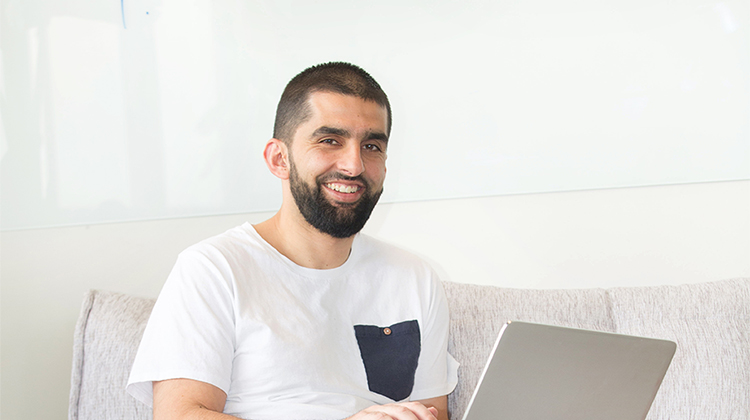Rich data makes for better maths

Data is one of edtech’s strong suits. After all, micro testing and the ability to personalise learning in real time are developments that aren’t really practicable with traditional teaching methods.
Access to this level of data is great for any subject area, but is particularly useful in a subject like maths where many struggle and drop out. Monitoring of progress is a powerful way to keep a student interested and involved with the subject.
Mathspace is all in on data. Mohamad Jebara, Founder and CEO of Mathspace, has been a maths and data enthusiast for his whole life. From high school maths, through to his former role as a derivatives trader, Mohamad has spent much of his life exploring the power of data. It’s this enthusiasm that ultimately led him to set up Mathspace 10 years ago.
“Constantly adjusting to real time data is the ultimate advantage for derivatives,” he says and that approach was brought to Mathspace when he decided that there were “more constructive ways to spend your time than moving money around.”
The Mathspace platform provides lessons, continuous assessment and reporting for Years 3-12 in a cohesive, easy to use way and using it has been proven to have a meaningful impact on student performance.
“We’ve set it up like a text-book so a teacher can add any question they want and create a task. It’s like a shopping cart experience, anyone can get started with it within a few minutes.
“We built the platform to mark every step of a student’s working out and if they’re stuck we provide a hint on how to get to the next step. It’s adaptive in that the questions get harder as the kids get the questions correct and they get easier if they struggle,” Jebara says.
The research is in, Mathspace has had strong adoption both here and in the States where a study conducted in Utah shows just how effective a stream of student data and adjusting teaching accordingly can be.
The study compared students’ 2018 SAGE mathematics raw scores, attainment of proficiency, and standardised growth percentiles (SGPs). Student usage data from 2017-18 was given to the Utah Education Policy Center (UEPC) on a monthly basis through a secure platform.
In total, over 94,000 students in Grades 3-12 were involved in the study, of which 6588 were Mathspace users.
The report says; “The results showed that students using Mathspace experienced significant growth over the period. In particular, students who were not proficient in the prior year demonstrated exceptionally high growth. This was measured using Student Growth Percentiles (SGPs), which are a measure of student growth calculated by the Utah State Board of Education. This measure assesses student growth by assigning each student to a percentile within an academic peer group. Academic peer groups are created with quantile regression using each students' available SAGE scores in the subject area from previous years.”
So it works, and as a mature product the ways in which it can be used in classrooms are many and adaptable to what the teacher is seeking to achieve.
“There are some who are just dipping their toe into edutech and are using it to supplement traditional chalk and talk classes and there are schools who are using it as their sole mathematics resource. Generally, this group of teachers are a lot more data driven and adopt a mastery based learning classroom,” Jebara says.
Their reporting has been refined recently. Mathspace identifies four key areas; effort, activity, proficiency and growth of students, that means a picture can be built of where a student spent their time, whether they were able to master the topic and what they were doing, all scored and clearly presented.
By providing focused reporting on these four areas Mathspace helps teachers to monitor classrooms efficiently, identify knowledge gaps and support struggling students. They also help teachers communicate a student’s progress in report cards and on parent teacher nights.
“The schools that use Mathspace get a continuous pulse on their students’ learning. We call this continuous assessment – the idea is not having these high stakes once a year or twice a year assessments but continuous low stakes assessment in every class.
“We constantly run professional development with teachers, which includes webinars almost daily to show teachers how they can use the data to inform their teaching. The power comes when you have collected data from the students, then the actionable insights and ability to differentiate can really take your teaching to the next level,” Jebara says.